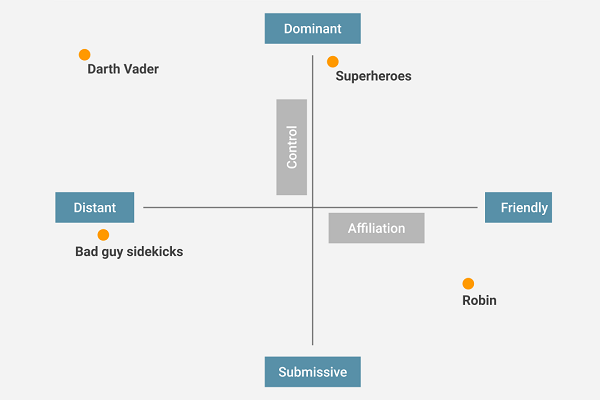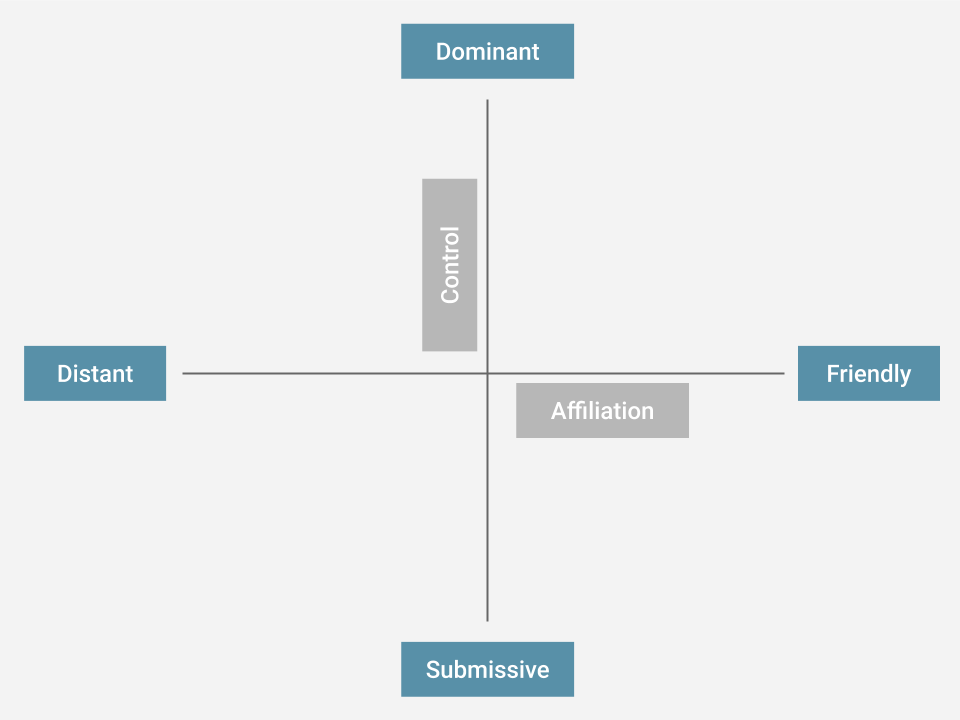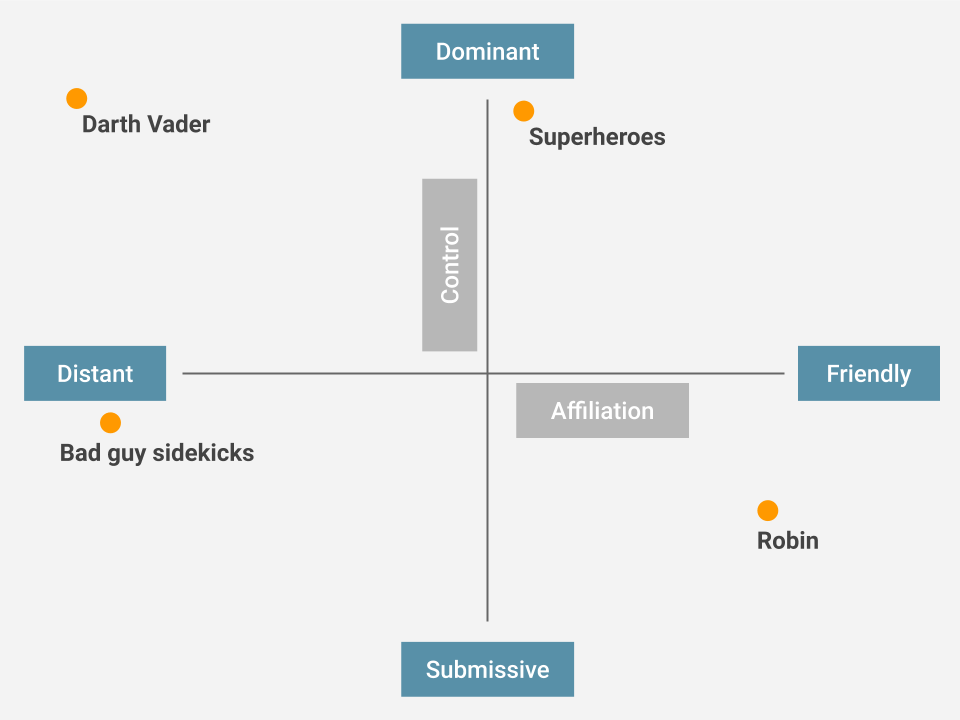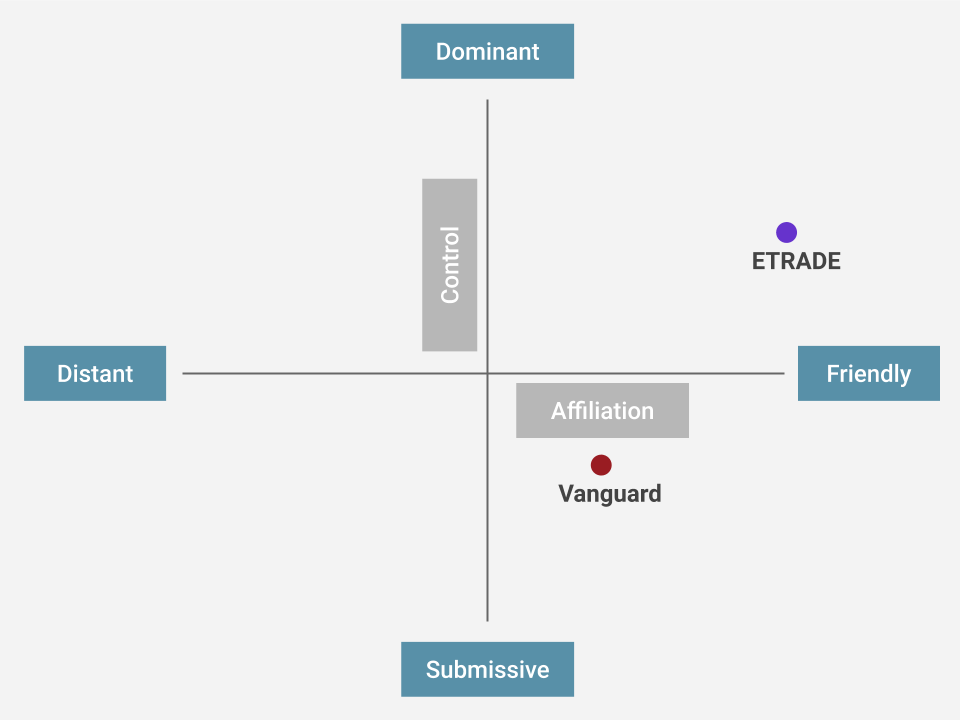Your Brand Has a Voice Personality Model Whether You Like it or Not. Here’s How to Define It
Pay attention, mortal meatbot, and you might learn something about voice personality in this article. Or, maybe a better opening line would be, Are you interested in learning how to use voice personality to increase the effectiveness of your voice apps?
Or maybe not.
The point is, there are different ways to deliver a message. The style you choose will likely impact your message’s effectiveness. And that’s the point of a voice personality methodology. To hopefully nail the optimal voice for your brand.
You Cannot Not Communicate
The line above is from influential graphic designer David Carson. It’s a simple concept. Whatever font, imagery, or layout you use to represent your brand, it will make a statement about the identity and values of the company behind the message. Those who think they can hug the middle of the road attempting to avoid standing out can come across as bland and generic. And of course, bland and generic can be ways to describe a personality. Just not terms most brands are likely to aspire to.
The spoken word adheres to the same communication principle. Clifford Nass, a former Stanford professor of Communications who did extensive research on the impact of various voice personality traits, said that within seconds of a human hearing a voice, we begin to assign all sorts of personality traits to it. Whatever voice it is. However nondescript we may think it is. To demonstrate this, below are 2 human voice-over reads for the same script. Even with the bland, generic script used in those reads, listen to the two voices and note how your mind conjures different personas for each.
AUDIO SFX: S1VO1
Credit: Patrick Lagreid at Voices.com (LINK: https://www.voices.com/actors/plagreid)
AUDIO SFX: S1VO2
Credit: Debbie Feldman at Voices.com (LINK: https://www.voices.com/actors/debbiefeldman)
Of course, like any self-respecting professor at a research university like Stanford, Nass didn’t stop after a couple of experiments and call it a day. Through extensive lab environment testing, he developed the Media Equation theory[1]. It introduced the idea that humans assign personalities to machines we interact with similar to the way we do for humans we interact with. That’s highly significant for anyone building any type of technology interface. To demonstrate that concept, listen to the audio clips below.
AUDIO SFX: S2VO1
Credit: Sarah Raines at Voices.com (LINK: https://www.voices.com/actors/Sarah_Raines615)
AUDIO SFX: S2VO2
Credit: Scott William at Voices.com (LINK: https://www.voices.com/actors/SWilliam)
AUDIO SFX: S2VO3
Credit: Amazon Polly Synthetic Voice Joanna
In accord with the Media Equation theory, the persona behind the 1st and 3rd clips should feel more alike than the 2nd one. I believe they do.
A Model for Personality Types
In his book “Wired for Speech”, professor Nass provides detailed accounts of 20 studies on how voice personality impacts the user’s perception and behavior. He also points out the usefulness of a personality model to help in selecting the right voice characteristics and presents the Wiggins voice personality model as an effective tool. Wally Brill, head of conversation design, advocacy and education at Google, has given several good presentations on using the Wiggins Personality Model, as seen below.
The Wiggins model is simple. There are four quadrants, with the x and y-axis presenting polar traits. The x-axis contrasts distance with friendliness, while the y-axis goes from submissive to dominant. While voices don’t convey all personality characteristics like if a person is intuitive or spontaneous, there are a number of voice traits commonly associated with personality types. Nass focuses on four of them. Speech rate, pitch, variance in frequency, and volume. The Wiggins chart below plots how those voice traits influence personality.
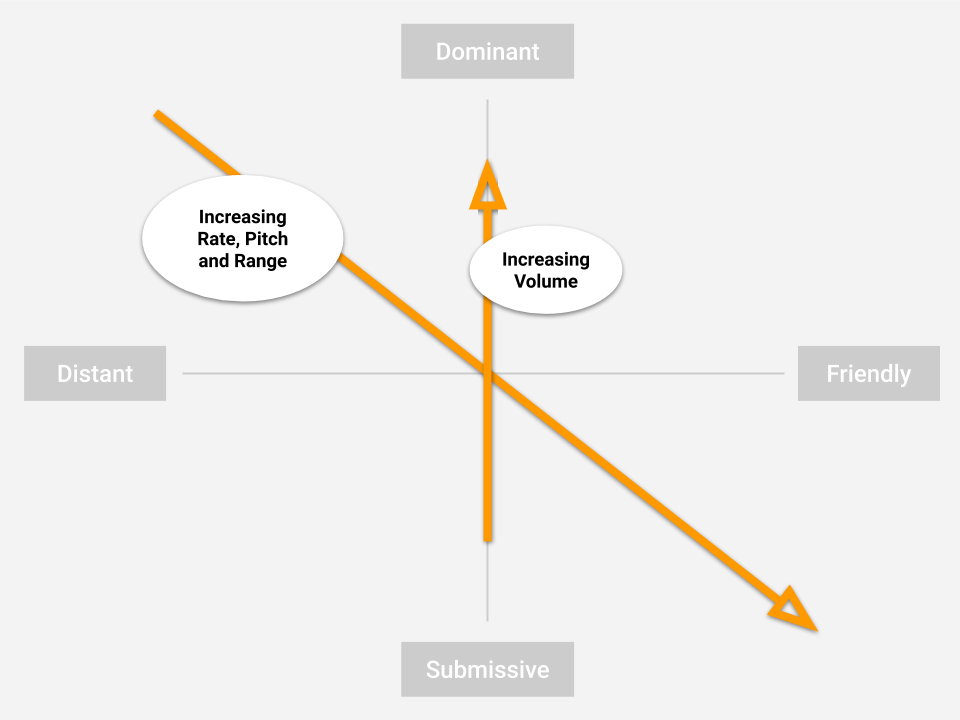 Nass even plots where several common character types reside on this chart. A supervillain like Darth Vader? His deep, slow, stolid voice provides a mix of dominance and unfriendliness. A classic bad guy voice. Superheroes also need to project dominance while also having a friendlier tone. So while they may have the deepness of a villain’s voice, they combine that with a wider frequency range and greater speed, adding friendliness to the mix.
Nass even plots where several common character types reside on this chart. A supervillain like Darth Vader? His deep, slow, stolid voice provides a mix of dominance and unfriendliness. A classic bad guy voice. Superheroes also need to project dominance while also having a friendlier tone. So while they may have the deepness of a villain’s voice, they combine that with a wider frequency range and greater speed, adding friendliness to the mix.
More secondary characters will likely have less dominance, i.e. be more submissive, and will vary along the friendliness and unfriendliness axis based on their desired perception of being on the good or the bad side of the story. This model may provide a blunt view of voice personalities, but it’s a good starting point for discussions around what voice personality would most likely fit a brand.
The right personality for your brand
A logical next question is, How do you know which voice personality is right for your company? The answer to that will vary significantly by company, but a good place to start looking is the company’s brand strategy document. The brand strategy document defines the brand’s identity. What the brand stands for. And it culminates in a brand promise: A statement that sums up the brand’s identity.
The brand promise takes into account three things in particular.
- The target audience(s) for the brand’s products or services. Not only who they are, but what their needs are, and what they find most relevant about the brand.
- The competitive landscape. How the company creates brand distinction from its competitors.
- The brand’s capacity for authentically supporting the brand promise. In other words, do the brand’s values and capabilities realistically back up a given strategic position?
That brand promise and the backing research in those three areas should go a long way to outlining the type of voice that will likely resonate with your target audience. Here’s a brand positioning statement template from Hubspot that contains those elements.
For [your target market] who [target market need], [your brand name] provides [main benefit that differentiates your offering from competitors] because [reason why target market should believe your differentiation statement.]
And keep in mind that brand promises are aspirational. Something the brand feels they can be, or at least evolve into. If you don’t have an official brand strategy document, then any information on the above three areas of consideration should be helpful. The better you know your target audience, your competitors and your own brand, the better you’ll be able to determine where your ideal voice should be in terms of friendly vs unfriendly, and dominant vs submissive.
How you compare with competitors
Making our brand personality distinct from competitors requires that we understand our competitor’s brand personalities. And indeed, while we probably won’t have their brand strategy documents, we can easily observe competitor’s communications. From advertising campaigns to logo designs to color palettes, the assets used in brand communications are a reflection of the values and positioning in their brand promise.
To illustrate this, let’s use an example of two brands from the financial industry: Vanguard and eTrade. When casually observed, financial industry brands can all sound the same. However, with some fairly quick observations of the brand’s communications, we see differing approaches to presenting themselves in the marketplace. 
Let’s start with Vanguard. The company is an icon within the investing community. Indeed, it’s founder, the late John Bogle, was a respected industry giant known for his thriftiness and efficient trading system. Company founders often drive the personality of the brand. Think Ford. Ralph Lauren. Um, Trump. Accordingly, the Vanguard logo font is a conservative serif font. The vintage-looking ship illustration certainly isn’t trying to rock the boat, if you will. Even the color palette is simple and about as unexciting as red can be. 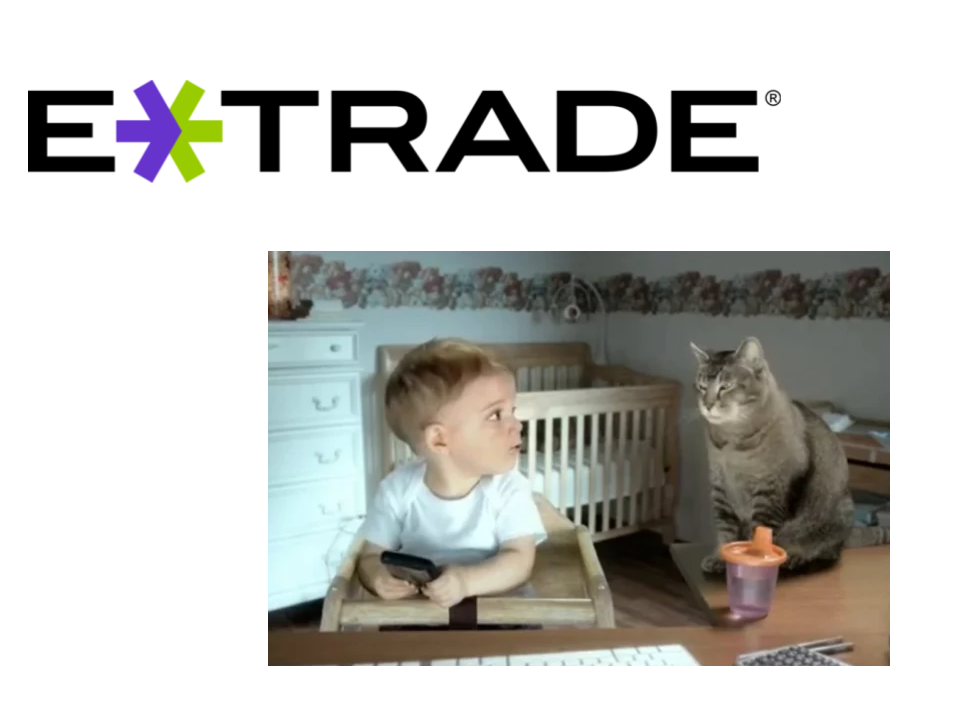 Now consider eTrade, in contrast. The brand font? Bold sans serif uppercase. The logo? Two colliding arrows. A strong sense of motion and energy. And the color palette. Purple and chartreuse. If you’ve ever seen eTrade TV commercials, you may know them for their sometimes brash and outrageous sense of humor. Vanguard TV commercials? You probably can’t think of any.
Now consider eTrade, in contrast. The brand font? Bold sans serif uppercase. The logo? Two colliding arrows. A strong sense of motion and energy. And the color palette. Purple and chartreuse. If you’ve ever seen eTrade TV commercials, you may know them for their sometimes brash and outrageous sense of humor. Vanguard TV commercials? You probably can’t think of any.
While two brands within an industry may pursue different target audiences and may stake out different personalities within their industry, each brand personality needs to be authentic to the company behind it. Considering our example brands, it would be hard to imagine Vanguard using a color palette like eTrade’s. Likewise, eTrade using anything like the Vanguard ship illustration for its icon would seem odd. So at least on the surface, the two company’s brand personalities feel appropriate. Going back to the Wiggins model, you can see how these two brands plot differently in terms of friendliness and dominance. Other brands can be added until you have a complete sense of where your brand stands within its competitive landscape.
What to Expect
Hopefully, this article has provided the reason, value and methodology for giving deep consideration to the type of voice, be it human or synthetic, that will represent your brand. Keep in mind, a process like this won’t define the entirety of your brand personality. But it gives you a structured view for comparing your brand to competitors and provides anchor points for discussion and further analysis.


